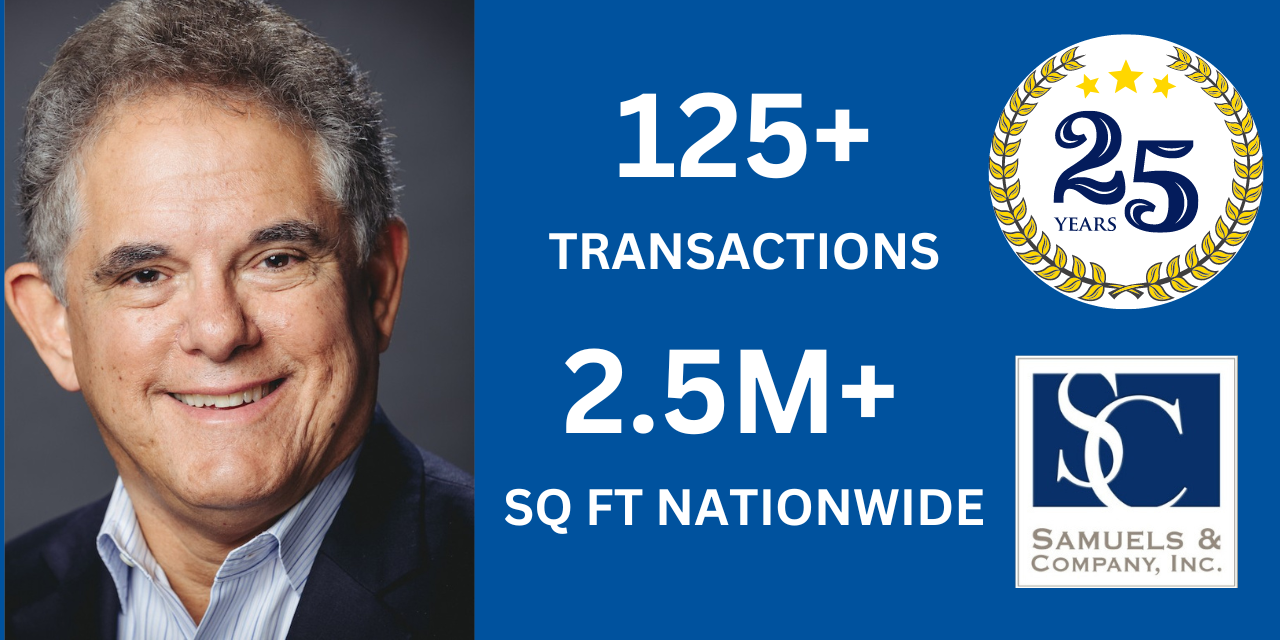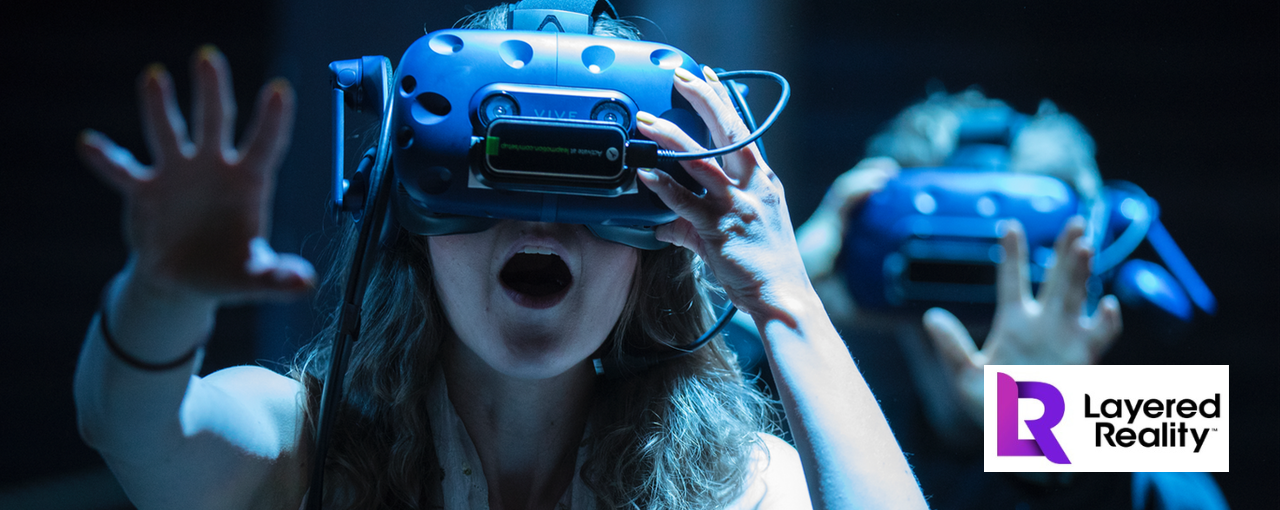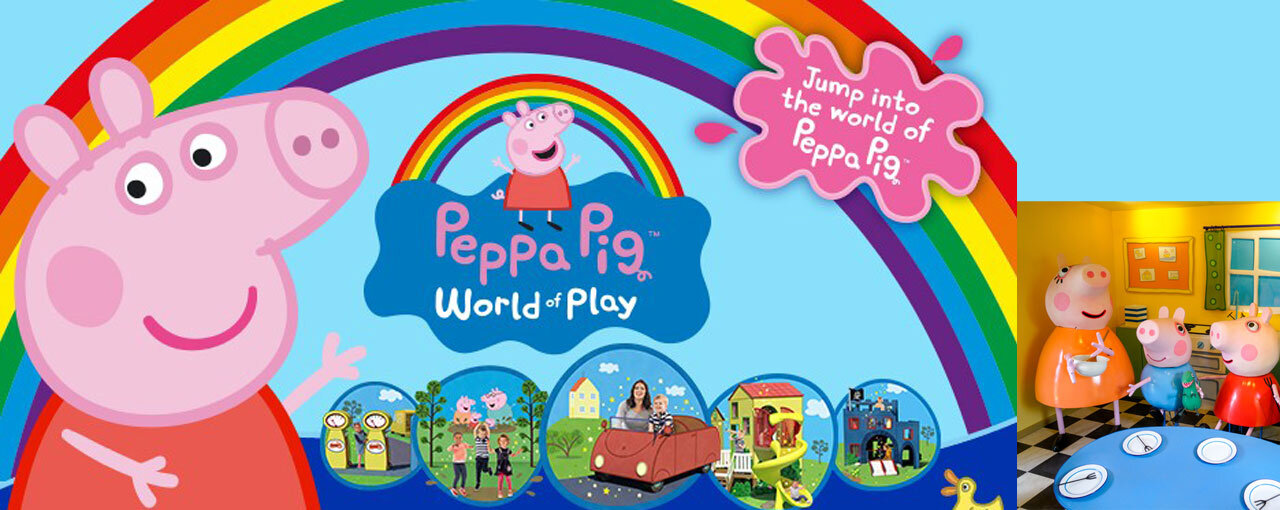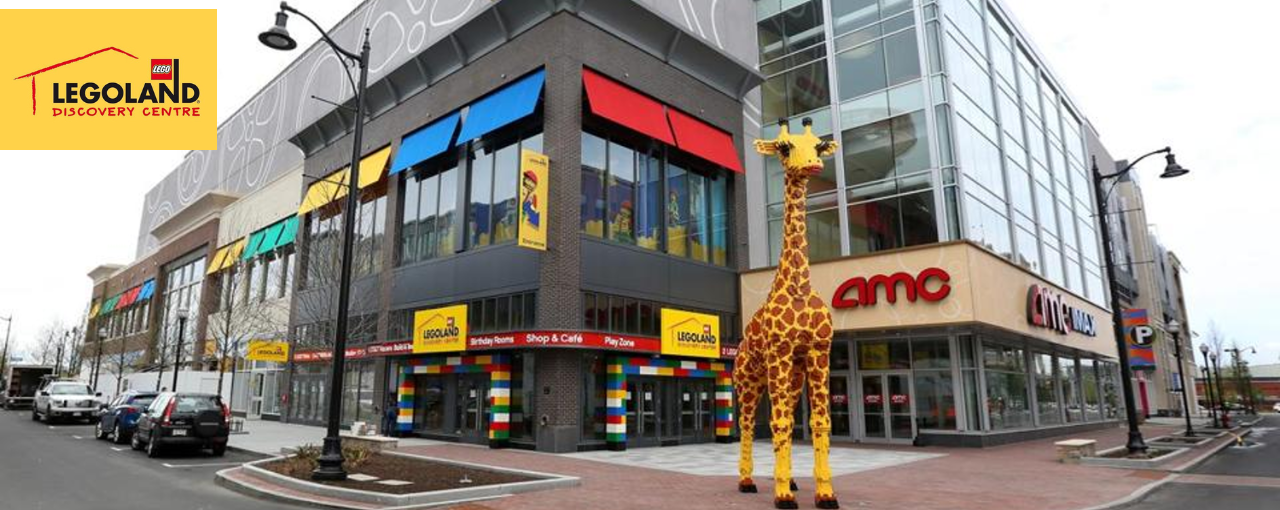Howard Samuels, President/CEO of Samuels & Company on Celebrating 25 Years of Evolution in Location Based Entertainment (LBE)
/Over the past 25 years, Location-Based Entertainment (LBE) has evolved dramatically within the retail real estate landscape. Howard Samuels, President/CEO of Samuels & Company, Inc., shares his insights on the evolution of LBE, its importance to mall owners, and some of the most innovative LBE experiences.
We first recognized the potential of the Location Based Entertainment (LBE) industry early on. In the mid to late 1990s, when LBE was still a relatively new concept in terms of viability/expansion plans/sustainability, we were fortunate to work with iconic brands such as House of Blues and Madame Tussauds. Initially we helped these great intellectual properties/operators of LBE companies identify and secure quality real estate locations for their venues. Since then, we have perfected our focus on LBE companies to help them expand their businesses with the best locations at reasonable industry-standard rents and occupancy costs.
2023 marks a significant milestone - the 25th anniversary of Samuels & Company, Inc.'s extensive work with LBE companies across the nation. Over the past quarter-century, we've had a front-row seat to the industry's remarkable evolution. In this article, we share our perspective on LBE's inception and growth, its current state, and how technology, consumer preferences, and recent industry trends are shaping its trajectory and future.
A Look at LBE's Beginnings
Tracing back to the 1970s and 1980s, theme parks like Disney World, Universal Studios, and LEGOLAND emerged, captivating visitors with immersive experiences that blended rides, shows, and themed environments. These theme parks required extremely high capital expenditures, long lead time to develop, and a significant commitment of these creative companies to bring their brands to life for consumers in a way distinct from movies and televisions. The arcade boom of the 1980s, led by games like Pac-Man and Space Invaders, further cemented LBE's presence in malls and retail spaces. The 1990s witnessed movie theaters adopting immersive experiences like IMAX screens and 3D movies, setting the stage for the industry's rapid evolution.
The Evolution of the Immersive Experience
The early 2000s saw VR technology's steady infiltration into the mainstream, with companies like The VOID and Dave & Buster's incorporating VR experiences into their locations. As the convenience of online services like shopping, dining, and banking surged, consumers sought more compelling reasons to venture outside their homes. To meet this demand, landlords and retailers began offering interactive, immersive experiences like indoor skydiving, go-carting, golf driving ranges and putting greens, immersive art installations, indoor aquariums, and escape rooms.
The driving force behind LBE's evolution in commercial real estate has been the continued desire for brands and landlords to provide unique and captivating experiences for visitors. As technology continues to progress, LBE concepts will likely become even more immersive and interactive, further blurring the line between entertainment and retail.
In the wake of the recent pandemic and the surge in online shopping, LBE concepts offer an extra dimension to shopping centers, main streets, and town centers, providing experiences that cannot be replicated online. They also provide excellent social experiences, offering a counterbalance to our increasingly technology-driven lives.
Highlighting Success of Two LBE Tenants: IT'SUGAR and Merlin Entertainments
IT'SUGAR and Merlin Entertainments, both notable players in the LBE industry, have built their success on providing immersive and captivating experiences for their patrons. Samuels & Company has had the privilege of serving as their exclusive real estate advisors and brokers nationwide, aiding their site search expansion efforts.
IT'SUGAR, a prominent candy retailer with a presence in over 100 locations throughout the United States, offers more than a traditional candy store. Its vibrant and playful spaces, adorned with oversized candy props and unique displays, create an interactive experience. Beyond selling sweets, IT'SUGAR engages customers with candy-themed photo booths and exhibits, offering innovative ways to connect with the brand.
Merlin Entertainments, a global entertainment behemoth, boasts over 130 attractions across 25 countries, including theme parks, aquariums, and other LBE ventures designed for immersion and engagement. One standout example is their indoor LEGOLAND mini-theme parks, known as LEGO Discovery Centers, located in city centers. These venues transport visitors into a world of LEGO bricks with rides, shows, and attractions centered around the beloved toy brand. Other attractions, such as SEA LIFE aquariums, provide visitors with unique opportunities to explore underwater worlds and interact with marine life. These experiences, along with other Merlin attractions like Madame Tussauds and Peppa Pig World of Play, embody the sense of wonder and excitement characteristic of the LBE industry. Merlin’s success in the industry stems from its ability to design, develop, build, and operate captivating and immersive experiences that cater to diverse audiences, employing unique intellectual property.
Both IT'SUGAR and Merlin Entertainments elevate the LBE industry by crafting experiences that extend beyond traditional retail or entertainment. They design their venues to be immersive, engaging, and memorable, dissolving the boundaries between shopping, entertainment, and leisure. They also tap into the growing popularity of edutainment by offering experiences that are both entertaining and educational.
IT'SUGAR and Merlin Entertainments are helping to create a new form of entertainment and retail experiences that are more meaningful and rewarding for consumers.
The Critical Role of LBE for Mall and Shopping Center Owners
In recent years, LBE has become indispensable to mall owners as traditional retail spaces struggle to adapt to consumers' changing needs and preferences. To remain relevant and attract foot traffic, malls have had to shift their focus towards offering experiences and entertainment options that consumers cannot get online.
One of the primary benefits of LBE for mall owners is its ability to increase foot traffic and drive sales. By offering a diverse range of experiences, such as virtual reality attractions, indoor amusement parks, and interactive museums, malls and shopping centers can attract a wider audience and encourage visitors to stay for longer periods of time. Increasing “dwell time” will lead to increased sales for retailers and food vendors within the shopping center environment.
LBE also provides shopping center owners with a unique opportunity to differentiate themselves from their competitors. By offering innovative and exciting attractions that cannot be found elsewhere, these shopping centers with LBE can create a unique selling point that sets them apart from other shopping destinations. This can help to attract new tenants and increase the overall appeal of the project.
In addition to these benefits, LBE can also help to reposition struggling shopping centers and breathe new life into outdated retail spaces. By repurposing underutilized areas of centers for entertainment and experience-based attractions, owners can create a more dynamic and engaging environment that appeals to a wider range of consumers.
LBE can help to improve the overall image and reputation of a mall. By offering high-quality attractions and experiences, shopping centers can improve their brand perception and become known as a destination for entertainment and leisure. This can lead to increased customer loyalty and repeat visits, as well as positive word-of-mouth marketing.
Overall, the importance of LBE to shopping center owners cannot be overstated. By providing a diverse range of experiences, driving foot traffic and sales, differentiating themselves from competitors, repositioning struggling malls, and improving their overall image and reputation, LBE has become an essential component of modern center management. As the industry continues to evolve and grow, it is likely that LBE will continue to play a critical role in the success of shopping centers and commercial real estate developments.
A Glimpse into the Future of LBE
As we peer into LBE's future, several key trends are poised to shape the industry. LBE's longstanding position at technology's forefront is likely to persist, with advances in AR, VR, and other emerging technologies propelling the development of increasingly immersive experiences. As LBE penetrates the mainstream, its expansion into new markets such as healthcare and education are expected. The integration of data analytics and artificial intelligence will enable LBE destinations to offer more personalized experiences to consumers.
Environmental concerns will prompt LBE destinations to prioritize sustainability, employing renewable energy sources, reducing waste and carbon emissions, and advocating sustainable practices. Collaborations between LBE destinations and other companies or organizations, such as movie studios and music labels, will create immersive experiences based on popular franchises. Furthermore, as consumers become more health conscious, LBE destinations will emphasize health and wellness in their offerings.
Numerous innovative LBE experiences have emerged in recent years, evolving rapidly with technology and consumer interest in immersive experiences. Examples include:
VR technology: Transforming the LBE industry with immersive experiences like VR escape rooms, roller coasters, and multiplayer games.
Mixed reality: Combining elements of virtual and augmented reality to create interactive experiences that blend digital and physical worlds, such as mixed reality theme park attractions and interactive museum exhibits.
Interactive theater: Allowing guests to participate in live theatrical productions with choices that impact the story's outcome, including escape room-style productions and immersive dining experiences.
Unique food and beverage options: Themed restaurants, food festivals, and craft beer gardens.
Social experiences: Multiplayer games, group challenges, and team-building activities.
Sports experiences: Virtual reality sports simulations, interactive golf ranges, and trampoline parks.
Music and art experiences: Live music performances, interactive music exhibits, music festivals, interactive art installations, immersive art exhibits, and digital art displays.
Science and education experiences: Interactive science exhibits, STEM-based activities, and educational tours.
As LBE destinations continue to innovate and evolve, they will offer a broader range of experiences that appeal to diverse audiences. The future of LBE promises to be an exciting one for developers, operators, and consumers alike.
Samuels & Company’s Role in the Growth of LBE
For the past 25 years, we have been able to leverage our deep expertise and knowledge of commercial real estate to help our valuable LBE clients identify locations that are strategically positioned to attract a high volume of customers. We have also played an instrumental role “translating” for owners the challenges of LBE and reasonable occupancy costs.
Some of our accomplishments included:
Managing the national roll out in the United States of Merlin’s midway attractions like Madame Tussauds, SEALife Centers and LEGOLAND Discovery Centers, which resulted in opening 34 attractions nationwide in 15 years.
Managing the national roll out for iFLY resulting in over 40 locations nationwide.
Assisting the senior management team at IT’SUGAR in growing their exciting newer concept stores that vary in size from 3,000 – 25,000 square feet nationwide, while helping procure over 15 sites per year.
Leading the development expertise and site selection efforts of Andretti Indoor Karting & Games (AIKG) to grow from 4 – 12 locations over 5 years nationwide.
Helping regional companies including the health and wellness RSG Group, which bought Gold’s Gym and created new concepts like John Reed Fitness and Heimat, in their strategic growth in Southern and Northern California and Dallas, Texas.
Helping landlords secure LBE tenants as clients to help make their properties more attractive to consumers such as LA LIVE, The Grove at Farmers Market at 3rd and Fairfax, Universal CityWalk and Cuestamoras entertainment complex in Costa Rica.
Other concepts we have worked with include bowling centers, family entertainment centers, escape rooms, immersive art concepts and wave pools.
We have also been involved in supporting emerging LBE companies. We enjoy working with startups in this space to help them develop their businesses and attract investment. This has helped to foster innovation in the industry and ensure that innovative ideas and concepts continue to emerge. Some new concepts include Layered Reality and Beat The Bomb.
Sharing our collective expertise and insights with others in the industry has positioned us as one of the thought leaders in the LBE space. Through speaking at conferences and events, authoring articles, and providing interviews, we are trying to play a small role in promoting the LBE industry and educating others about its potential.
On a personal note, LBE is an incredibly fun part of the Retail Real Estate business. At its core, it is about making people smile and encouraging them to venture outside their homes to experience something different in a social environment. As LBE continues to evolve and grow, we look forward to continuing to play a key role in shaping its future for at least another 25 years!
To download a PDF of this article click here









